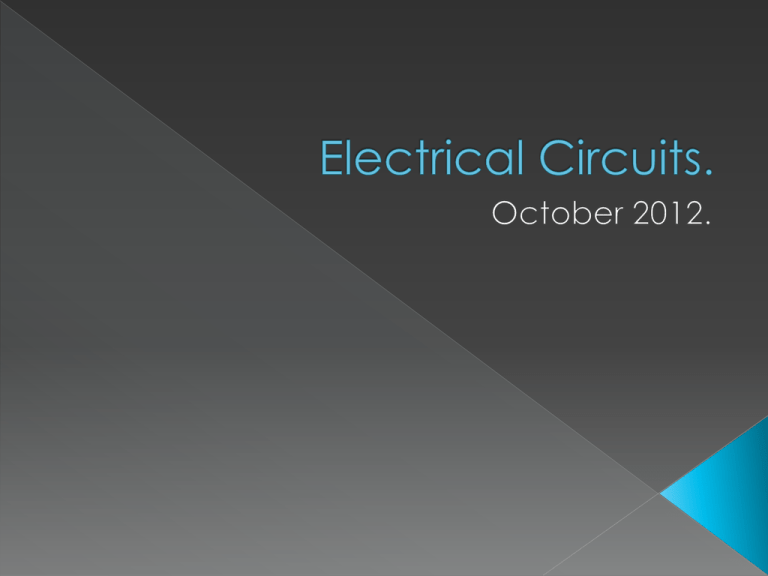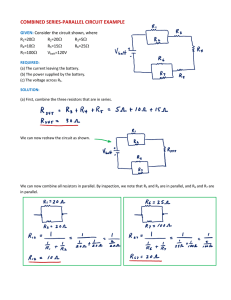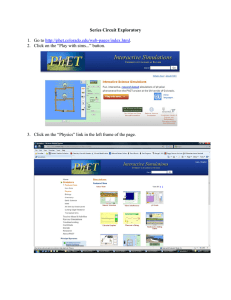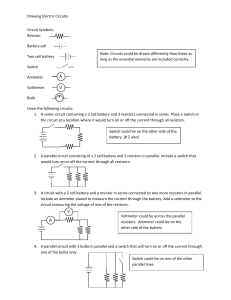Electrical Circuits: Series, Parallel, Resistance, Measurement
advertisement

To interpret and construct electrical circuit diagrams. To identify series and parallel arrangements of elements. To calculate the equivalent resistance for series and parallel circuits. To know the correct way of measuring with a voltmeter and an ammeter. When two or more resistors are connected end to end along a single path as shown, they are said to be connected in series. Any charge that passes through the first will pass through the second and the third. Hence the same current I passes through each resistor. 𝑹𝒆𝒒 = 𝑹𝟏 + 𝑹𝟐 + 𝑹𝟑 Another simple way to connect resistors is in parallel, so that the current from the source splits into separate branches or paths as shown. With parallel wiring, if you disconnect one device the current in the other devices is not interrupted. 𝟏 𝟏 𝟏 𝟏 = + + 𝑹𝒆𝒒 𝑹𝟏 𝑹𝟐 𝑹𝟑 Two 100Ω resistors are connected (a) in parallel, and (b) in series, to a 24 V battery. What is the current through each resistor and what is the equivalent resistance of each circuit? Solution: (a) 0.48 A and 50 Ω (b) 0.120 A and 200 Ω 1. How much current is drawn from the battery shown? 2. What is the current through the 500 Ω resistor? A 9.0 V battery whose internal resistance r is 0.50 Ω is connected to the circuit shown. (a) How much current is drawn from the battery? (b) What is the terminal voltage of the battery? An ammeter is used to measure current, and a voltmeter measures potential difference or voltage. Because an ammeter is used to measure current flowing in the circuit it must be inserted directly into the circuit, in series with the other elements as shown in the figure. A voltmeter, on the other hand, is connected externally, in parallel with the circuit element across which the voltage is to be measured. Example measuring current and voltage between points a and b. • Giancoli , Douglas C. Physics Sixth Edition. USA Pearson 2005 • Serway, Raymond A. Essentials of College Physics. USA Thomson 2007











